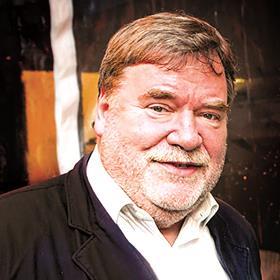As a prequel to COP26, and to coincide with the current architectural biennale, the US-based Design Intelligence group hosted a two-city event in Rome, then Venice discussing sustainability and its implications for architecture and architects.

A broad spectrum of practitioners, teachers and observers talked and debated for a week, taking as one cue the 16 UN sustainable development goals (SDGs).
Some of these are so broad as to be beyond the scope of usual architectural activity – for example ‘no poverty’ or ‘zero hunger’. Others are highly relevant, including ‘sustainable cities and communities’, or certainly include an architectural element: ‘good health and wellbeing’; ‘quality education’; or ‘industry innovation and infrastructure’.
The SDGs cover a lot of similar territory to the 10 categories of the WAFX Awards, which the World Architecture Festival launched in 2017 to mark its 10th anniversary. The intention is to celebrate future projects that represent an exemplary approach to the social and environmental problems we face today and are likely to continue to face over the coming decades.
Well designed schools are good, but on their own cannot guarantee good education
It is the contribution architecture can make which is the important thing, not the kind of arrogant assumption that a single discipline or profession can or should take sole responsibility for resolving great problems. Well-designed schools are of course a social good, but on their own cannot guarantee good education. What about the quality of teachers?
Similarly, even in respect of buildings and cities, architecture on its own is unlikely to address fully the scale of what is required. Planners, engineers, ecologists, landscape architects, developers, housebuilders and contractors will all need to make a contribution.
It is precisely the variety of people and institutions, including finance and government, that make the task of creating a sustainable world so complex – even if the biggest carbon producers were on board with the ideas broadly adopted in Glasgow, which they aren’t.

Whatever individual countries may undertake or achieve in the next few decades, global temperatures look set to rise while those big polluters work at their own pace to join the rest of the world in commitment to low-carbon futures.
Collaboration required
In these circumstances, one potential role architects and designers might play is that of synthesiser: playing an active role in designing the nature of the collaboration that will be required to achieve desired outcomes.
Thus far this potential has neither been exploited nor proposed in any sort of vigorous way, but it is the synthesis of old and new, generation and regeneration, and the pursuit of ‘long life, loose fit, low energy’ that demonstrates architects’ ability to think in the broadest way.
The title of this year’s Venice biennale – ‘How will we live together?’ – is rather too predictive given the inevitable uncertainties that should inform any discussion about what will happen between now and 2050. The 2008 financial crash and the 2020 pandemic should surely have expelled any idea that we can predict the future with confidence; a better title for the biennale would be ‘how should we’, or ‘how might we’ live together.
Architecture’s potential role in this is the subject of the biennale, and is as varied in content and tone as might be expected. One could conclude that the big issues facing us will influence architecture, but in turn the propositions from architects and other designers may have an effect on society at large – a story of both reception and transmission.
For practices and individuals, all this will be influenced by an attitude to values, ethics and morals, and what this might mean in respect of adopting, for example, one or several of those UN SDGs as part of a practice’s mission. Design Intelligence has smart ideas about how practices might pursue this, and is in discussions with many US practices. Let’s see what emerges.
Paul Finch is programme director of the World Architecture Festival






























No comments yet